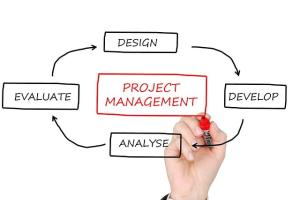Project Constraints and Trade-offs

Project constraints refer to the limitations and restrictions that impact project planning, execution, and outcomes. Trade-offs are the strategic decisions made to manage these constraints effectively. Project managers must understand and manage constraints to ensure project success. Here's an in-depth exploration of this topic:
Methods:
- Identifying Constraints: Project managers identify and document project constraints, which may include time, cost, scope, quality, resources, risks, or external factors like regulations or market conditions.
- Analyzing Interdependencies: Project managers assess the relationships and interdependencies between different constraints. Changes to one control may impact others, requiring trade-offs and careful consideration.
- Making Trade-off Decisions: Project managers prioritize constraints based on project objectives, stakeholder expectations, and overall project success criteria. They make strategic decisions and trade-offs to manage constraints effectively.
Types:
- Time Constraints: Projects often have strict deadlines or time frames that need to be met. This constraint affects project scheduling, resource allocation, and overall duration.
- Cost Constraints: Projects are typically constrained by budgetary limitations. The available funds influence resource allocation, procurement decisions, and project scope.
- Scope Constraints: Project scope defines the work that needs to be accomplished. Scope constraints involve balancing stakeholders' expectations and project requirements within the available resources and time frame.
- Quality Constraints: Projects have quality standards that need to be met. Quality constraints involve trade-offs between meeting quality requirements and managing time and cost limitations.
- Resource Constraints: Projects require various resources, including human resources, equipment, and materials. Resource constraints involve managing resource availability, allocation, and utilization efficiently.
Advantages:
- Improved project planning and decision-making through awareness of constraints.
- Efficient allocation of resources based on prioritized constraints.
- A clear understanding of project boundaries and limitations.
- Enhanced stakeholder communication and expectation management.
- Mitigation of risks associated with constraint violations.
Disadvantages:
- Trade-off decisions may lead to compromises or reduced performance in certain areas.
- Difficulty in managing multiple constraints and their inter-dependencies.
- Potential conflicts and challenges in balancing stakeholder expectations.
- Limited flexibility in adapting to changing project conditions due to predefined constraints.
Applications:
Project constraints and trade-offs are relevant to projects in various industries, including construction, manufacturing, software development, and engineering. They are applicable to projects of different scales, ranging from small initiatives to large-scale endeavors.
Example:
Consider a construction project to build a commercial office building. The project has time constraints due to a predefined move-in date. The project manager needs to carefully manage the trade-offs between time and cost to ensure timely completion while adhering to the budget. The scope constraint prioritizes essential features and functionalities within the available resources. Quality constraints are addressed through proper quality control processes, inspections, and compliance with building codes and standards.
References:
- Kerzner, H. (2017). Project Management: A Systems Approach to Planning, Scheduling, and Controlling. Wiley.
- Lewis, J. P. (2010). Project Planning, Scheduling & Control. McGraw-Hill Education.









